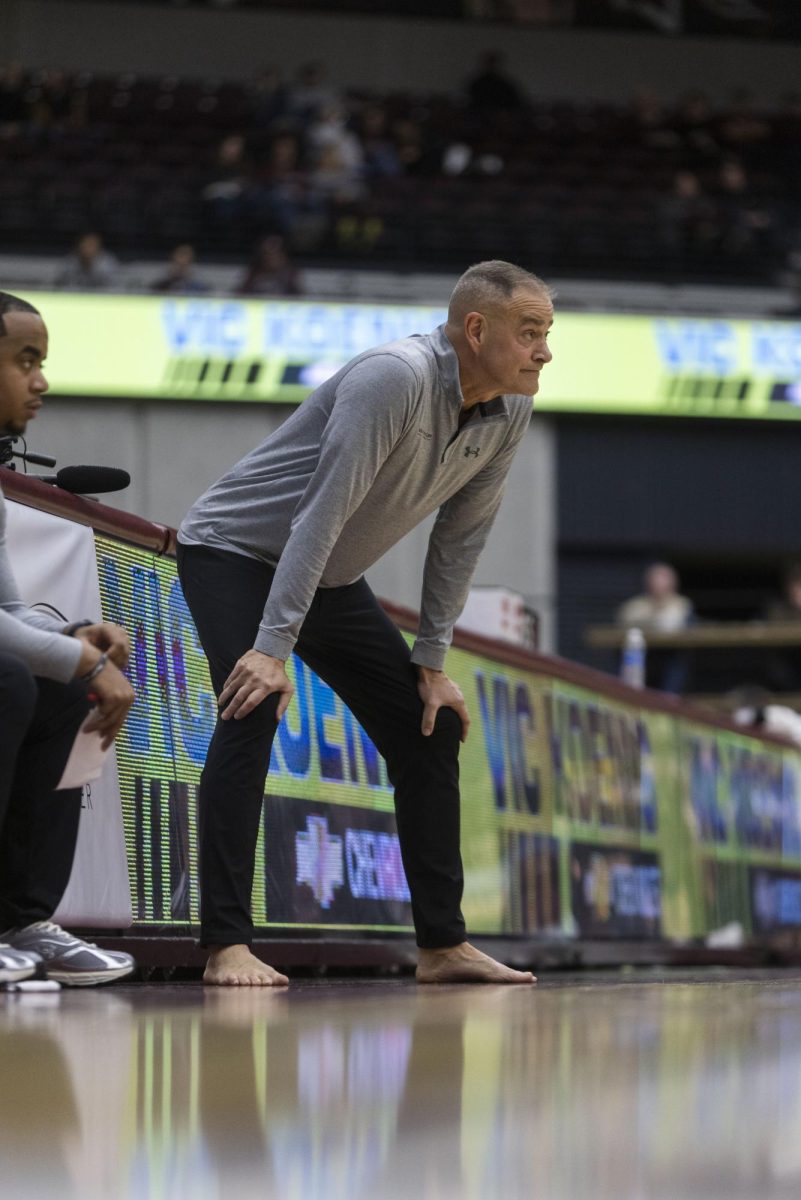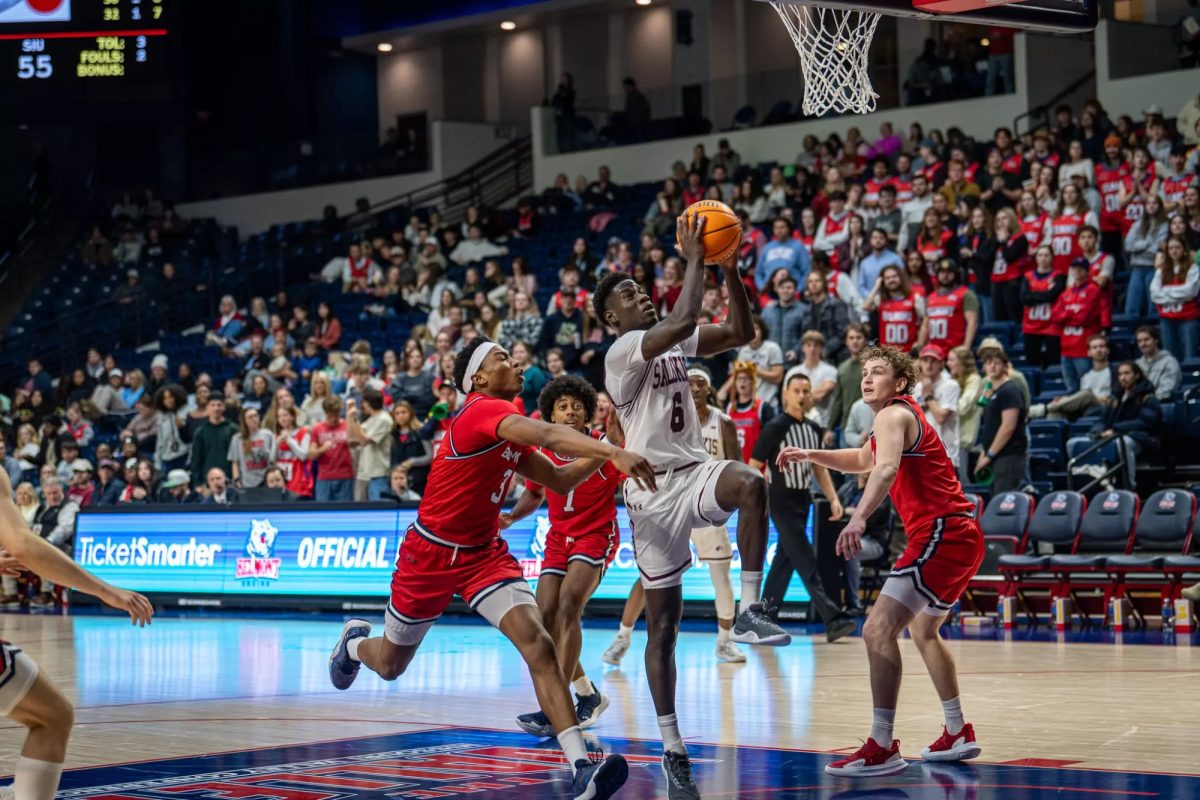5 programs, services that would drastically change or close without state funding

Daily Egyptian file photo
March 11, 2016
Since SIU President Randy Dunn’s proposed budget plan, many on campus are reacting and speaking up about what a loss of state dollars would entail.
Under Republican Gov. Bruce Rauner’s budget proposal, SIU would lose $23 million — 20 percent of its state funding. If Rauner’s proposed budget were to pass, SIUC would eliminate 180 positions, 400 classes and 300 student positions, Dunn announced Wednesday.
For more than eight months, Rauner and the Democratic Legislature have been unable to agree on a state budget, leaving universities and colleges without funding since July 1. The standoff has left the state’s higher education institutions in an alarming situation.
Advertisement
While many more are worried about the stalemate, leaders at the five places listed below say it and Rauner’s fiscal year 2017 proposal could drastically change or eliminate their programs.
Touch of Nature Environmental Center
Should the center lose its state support of more than $500,000, it would lose all of its funding.
Director J.D. Tanner said the operation would probably still exist, but the state funding provides salary dollars for all 10 employees. He said the loss of that funding could radically change the organization.
“It’s a little nerve-racking,” Tanner said. “It’s all a what-if scenario that was proposed by the president. We can’t operate off of what-ifs. We’ve got to keep operating business as usual.”
The center is already preparing for summer camps and other programs even though those workers may not be employed in upcoming months.
Touch of Nature, which was founded in 1949, has offered a special needs camp annually since 1952, which is just one of the few programs offered, Tanner said.
Advertisement*
He said many forestry and recreation students use Touch of Nature for field research. Even architecture, which holds a class at Touch of Nature during spring semesters, would lose resources if state funding was lost.
“We provide really good community events that we want to continue to provide,” Tanner said.
University Museum
The 142-year-old museum in Faner would close if the budget proposed by Rauner passes, said Susannah Munson, curator of anthropology for the museum
“This university has hardly ever existed without the museum,” Munson said. “It would a shame to the school, the community and all the students to lose such a resource.”
In Dunn’s proposal for university cuts, the museum could potentially lose all of its state funding, nearly $300,000. That funding — which pays the salaries of five full-time staff, including Munson — is its only source.
MORE: If SIU jobs are at risk, representatives should be, too, Daily Egyptian editorial board says
About five classes involved with the museum would be eliminated, affecting Museum Studies minors.
The museum is also used by students studying history to curate and obtain hands-on experience.
“There would be a lot missing from [students’] experience at SIU,” Munson said.
University Press
The university’s press could lose 17 percent of its budget, which would cause major layoffs and publication reductions.
Director Barb Martin said the nearly $190,000 potential cut could have severe consequences for the press, which already scaled back its budget this fiscal year by 12 percent.
She would have to reduce staff by half and reduce publications by 30 to 40 percent. The press currently publishes about 40 books a year.
“Part of me says it’s possible the press could shut down completely,” Martin said. “We’re certainly going to explore other avenues and ways to keep the press viable. At this moment, it’s hard to know exactly what will happen. I think we’d become a very different press; that is for sure.”
Martin said the press is not self-sufficient and needs state dollars to operate.
“I worry about our future. The fact that the state doesn’t seem to want to support higher education is a little scary,” Martin said. “What does that mean for scholarly presses that are publishing scholarship and promoting that dialogue across the disciplines?”
Research
Research Rookies, REACH and undergraduate assistant programs could be lost if the nearly $900,000 cuts becomes reality, said James Garvey, the campus’ vice chancellor for research.
This amounts to the loss of 250 to 300 undergraduate researchers.
Garvey said while cuts would have a significant impact, research would continue to be a vital aspect of the university. He also said external funding, such as federal grants, have increased this fiscal year.
He is scared faculty will have less time to complete research because professors could have increased teaching loads as class sizes increase, taking time away from projects. He is worried the university could experience a “brain drain” if this happens as faculty may transfer to universities with a more stable budget.
MORE: Dunn, university officials urge legislators to fund higher education
Garvey said many research centers on campus are becoming self-sufficient, but others need a staff to continually manage them. For example, the Vivarium houses animals for medical research, which requires a specifically trained staff.
For him, research loss goes beyond SIUC: it affects the region and the state.
School of Law
The law school is at risk of losing its state funding as well, which is about $3 million.
This would be about a 30 percent cut of the law school’s $10 million budget. Such a loss would mean the school would operate primarily on tuition.
As of now administration and faculty do not have a contingency plan, because they found out about the proposed reductions on March 11 when Dunn released his statement, said Chris Behan, associate dean for academic affairs. He said plans are underway for larger discussions.
The cut is sizable enough to cast concern on the school’s reaccreditation by the American Bar Association. Behan, however, said the process of accreditation occurs over a period of years and is not lost immediately. While the association considers financial stability, plans for dealing with any instability are also considered.
Still many students are concerned, and Behan said he worries about how the budget impasse will affect retention and recruitment.
Since Dunn released his proposed cuts, the school’s administration met with faculty and students to discuss the situation and give them time to voice their concerns.
“We’re in the same boat as the university,” Behan said. “Our current students are saying, ‘Should we stay or should we transfer?’ Prospective students want to make sure they come to a place that’s stable.”
Despite the ongoing budget impasse, legislatures are not scheduled to be back in the chambers until April 4, something Rauner has called “outrageous,” according to The Associated Press. Until then, these programs and services will remain in limbo.
“It’s wrong, they should get back here and do their jobs,” Rauner told reporters March 8, the AP reported that day.
Cory Ray can be reached at [email protected] or at 618-536-3326.
Advertisement








